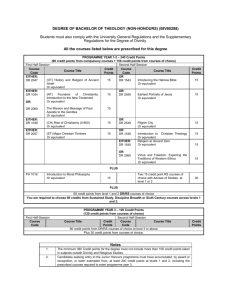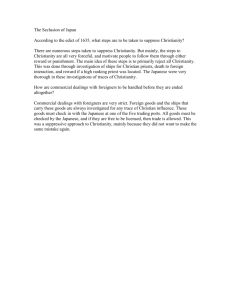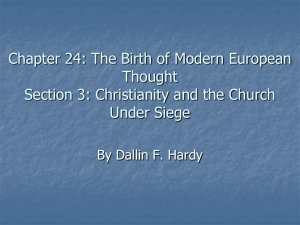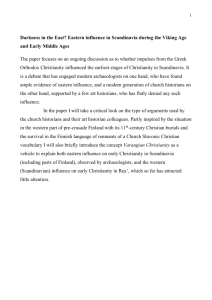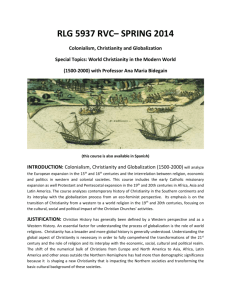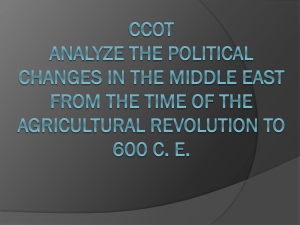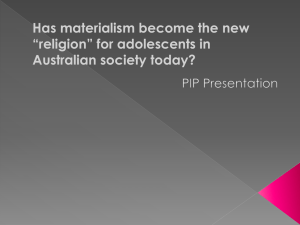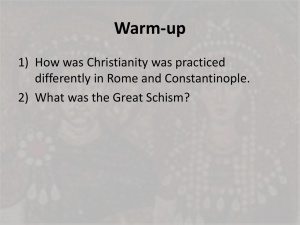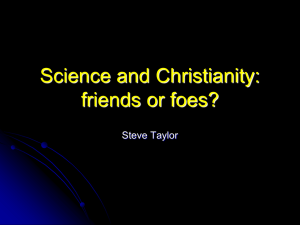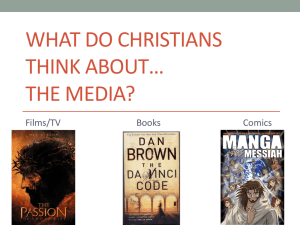Ways of the World Ch. 10 Power Point
advertisement
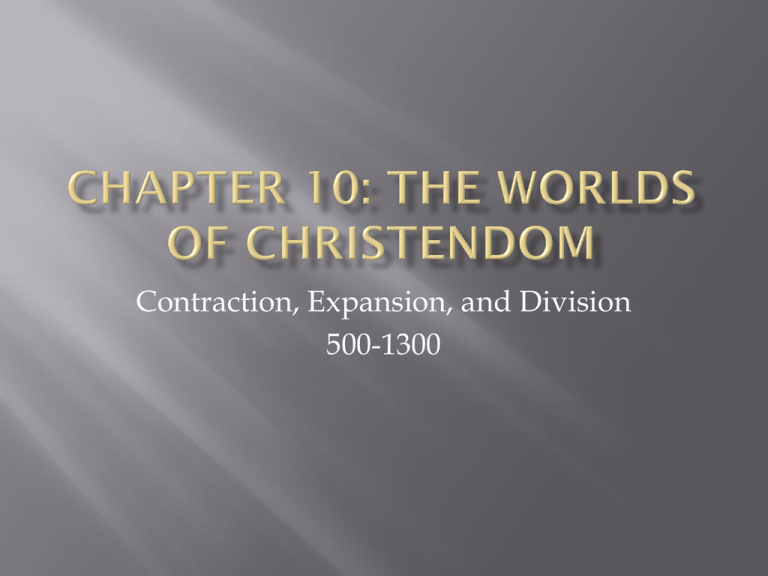
Contraction, Expansion, and Division 500-1300 To teach students why Christianity became a major religion during the third wave era of civilizations. To teach students how and why Christianity contracted and expanded in different parts of the world during this time period. 9.4.3.8.3 9.4.3.9.1 9.4.3.9.5 Growth of modern Christianity China, South Korea, Taiwan, Singapore, The Philippines, Vietnam, and parts of India. Non-Muslim regions of Africa Protestant Christianity in Latin America Widespread in Africa and Eurasia Contraction of Christianity Division ASIAN CHRISTIANITY Contraction due to the emergence of Islam Powerful Arab Empire Several sacred locations taken by Islam “Arrival of new faith” Warfare against nearby Byzantine and Persia Conversion to Islam ASIAN CHRISTIANITY Contraction of Christianity in China Chinese state turned against all foreign religions Acceptance from the Mongol rule Almost completely vanished during the Confucian Ming dynasty AFRICAN CHRISTIANITY Majority of Egypt practiced Christianity under Islamic rule – “dhimmis” Violent change when Egypt threatened by Mongols and Christian crusaders Rise and decline in Nubia Strong Christian community in Ethiopia What variations in the experience of African and Asian Christian communities can you identify? Ties between church and state. Provided a cultural identity Eastern Orthodox Christianity Roman Catholicism Crusades Seizure and looting of Constantinople in 1204 Struggle against Persian Empire “Greek Fire” Long-distance trade in Eurasia Cultural influence Conquest of Balkans and parts of Russia Culturally diverse Kievan Rus Prince Vladimir or Kiev Sought to unify the diverse area Linked Rus with larger networks of communication and exchange “Third Rome” How did links to Byzantium transform the new civilization of Kievan Rus? Ch. 10 Ways of the World Students will demonstrate knowledge of how different cultures influenced the west. Students will recognize technological advancements made by the west as a result of borrowing. Students will learn the basics of pluralism in politics in the west. Students will learn about the idea of reason and theology and its effect on faith. 9.4.1.2.1 9.4.1.2.2 9.4.3.8.1 9.4.3.9.7 Far behind other civilizations Smaller cities Weak political figures Weak economy Technologically behind How did the West catch up to other civilizations? Answer: Borrowing Intellectual Innovations: Cultural Innovations: Examples: Mathematics, Chess Examples: Christian Mysticism, Music, Poetry Technological Innovations: Examples: Horse Collar, Gunpowder, Paper Heavy wheeled plows to handle dense soil of north Europe. Horses Three- field crop rotation Windmill, water driven Gunpowder Cannons Question: In what ways did borrowing from abroad shape European civilization after 1000? No Empire Competing coexisting state governments Weaker competing officials / rulers Local commoner representation in government Embryonic parliaments represented the three estates, 1-Clergey, 2-Landowning nobility, and 3-urban merchants War Strengthened local militaries Drove Scholars and Bureaucrats Extended trading and borrowing Further advanced agriculture Lead way for capitalism (Erich Lessing/Art Resource, NY) Theology European intellectuals were called to ask questions. Who? What? When? Where? Why? The idea was to provide a rational foundation of faith. Reason was applied to religion, law, medicine, nature, astronomy, etc. Aristotle was the prominent figure in the area of theology. Many scholars were force out of European countries and took their teachings to the Islamic World. Theology was accepted and eventually taught in the University. Lead the way for scientific study. Religious establishments saw reason as a threat. A threat that questioned the fundamentals of their ideology. To this day there is tension between religious groups and scientific thinkers. Does this picture portray Christ's Divinity? Look closely at the picture before answering. How does the image portray Jesus as an All-Powerful ruler? Does this image of Jesus differ from others you have seen? LADDER OF DIVINE ASCENT Instructional book for Byzantine monks Taught monks to overcome temptation and ascend toward union with God The demons represent various sins
